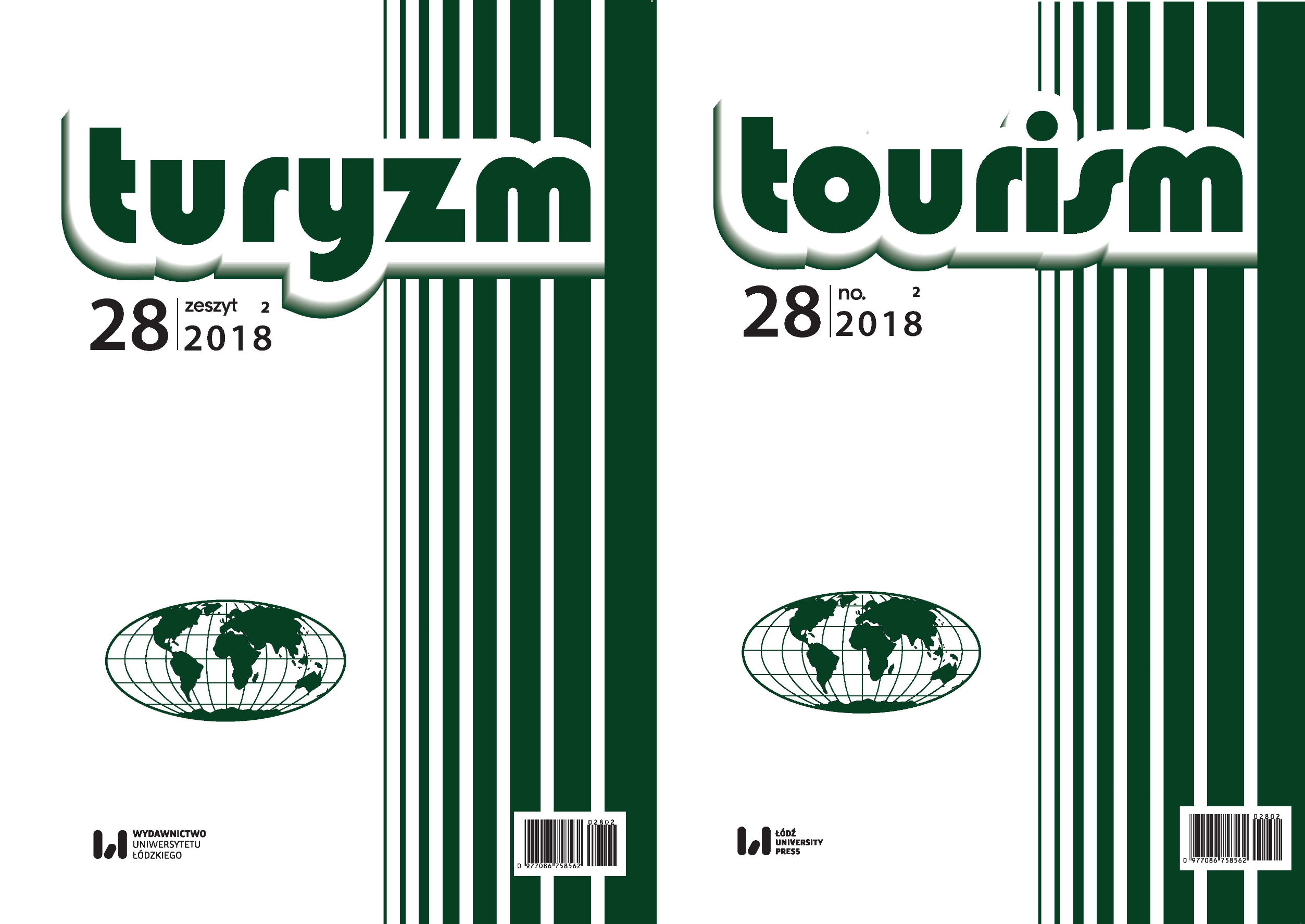TripAdvisor as a source of data in the planning process of tourism development on a local scale
DOI:
https://doi.org/10.2478/tour-2018-0014Keywords:
social media in tourism, Web 2.0, TripAdvisor, UGC, local tourism planningAbstract
The aim of this article is to answer the question of whether social networking sites can be an effective source of data, useful in the context of local tourism planning. The first part of the article contains a presentation of the role of social media in the tourism industry, a synthetic discussion of the most common topics of research related to the use of social media in tourism, and also characteristic of the TripAdvisor social network, which is the subject of the study. The second part presents the results of a study conducted using the website, covering the 30 most popular hotels, restaurants and tourist attractions in Poznan. The results contain a comment about the risks associated with the analysis of this type of data, as well as possible future directions of research.
Downloads
References
AYEH J.K., AU N., LAW R., 2013, „Do we believe in TripAdvisor?” Examining credibility perceptions and online travelers’ attitude toward using user-generated content, „Journal of Travel Research”, 52 (4), s. 437–452.
Google Scholar
BANERJEE S., CHUA A.Y.K., 2013, Reliability of reviews on the Internet: The case of TripAdvisor, World Congress on Engineering and Computer Science, San Francisco.
Google Scholar
BERTHON P.R. i in., 2012, Marketing meets Web 2.0, social media, and creative consumers: Implications for international marketing strategy, „Business Horizons”, 55 (3), s. 261–271.
Google Scholar
BRZEZIŃSKI S., JASIŃSKI M., 2014, Media społecznościowe w marketingu terytorialnym polskich miast, „Marketing i Rynek”, 3, s. 9–17.
Google Scholar
CHAN N.L., GUILLET B.D., 2011, Investigation of social media marketing: How does the hotel industry in Hong Kong perform in marketing on social media websites?, „Journal of Travel & Tourism Marketing”, 28 (4), s. 345–368.
Google Scholar
FOTIS J., BUHALIS D., ROSSIDES N., 2012, Social media use and impact during the holiday travel planning process, Paper presented at the 19th international conference on information and communication technologies in travel and tourism (ENTER), January 25–27, 2012. Sweden: Helsingborg.
Google Scholar
HAYS S., PAGE S. J., BUHALIS D., 2013, Social media as a destination marketing tool: Its use by national tourism organisations, „Current Issues in Tourism”, 16 (3), s. 211–239.
Google Scholar
HOWE J., 2009, Crowdsourcing: Why the power of the crowd is driving the future of business, Three Rivers Press, Nowy Jork.
Google Scholar
KAPLAN A.M., HAENLEIN M., 2010, Users of the world, unite! The challenges and opportunities of social media, „Business Horizons”, 53 (1), s. 59–68.
Google Scholar
KRUCZEK Z., 2016a, Frekwencja w polskich atrakcjach turystycznych. Problemy oceny liczby odwiedzających, „Ekonomiczne Problemy Turystyki”, 35, s. 25–35, https://doi.org/10.18276/ept.2016.3.35-02
Google Scholar
KRUCZEK Z., 2016b, Frekwencja w atrakcjach turystycznych w latach 2011–2015, Polska Organizacja Turystyczna, Kraków–Warszawa.
Google Scholar
KWOK L., YU B., 2013, Spreading social media messages on Facebook, „Cornell Hospitality Quarterly”, 54 (1), s. 84–94.
Google Scholar
LIU Z., SIGUAW J.A., ENZ C.A., 2008, Using tourist travel habits and preferences to assess strategic destination positioning: The case of Costa Rica, „Cornell Hospitality Quarterly”, 49 (3), s. 258–281.
Google Scholar
MCAFEE A., BRYNJOLFSSON E., 2012, Big data: The management revolution, „Harvard Business Review”, 90 (10), s. 61–67.
Google Scholar
MIGUÉNS J., BAGGIO R., COSTA C., 2008, Social media and tourism destinations: TripAdvisor case study, „Advances in Tourism Research”, 26 (28), s. 26–28.
Google Scholar
MUNAR A.M., JACOBSEN J.K. S., 2014, Motivations for sharing tourism experiences through social media, „Tourism Management”, 43, s. 46–54.
Google Scholar
O’REILLY T., 2005, What is Web 2.0, O’Reilly Media, https://www.oreilly.com/pub/a/web2/archive/what-is-web-20.html
Google Scholar
PHILLIPS P., MOUTINHO L., 2014, Critical review of strategic planning research in hospitality and tourism, „Annals of Tourism Research”, 48, s. 96–120.
Google Scholar
POLAŃSKA K., WASSILEW A., 2015, Analizy big data w serwisach społecznościowych, „Nierówności Społeczne a Wzrost Gospodarczy”, 44 (4/2015), s. 117–128.
Google Scholar
PUDEŁKO M., 2017, Prawdziwa historia Internetu, wyd. 3, Itstart, Warszawa.
Google Scholar
SZROMNIK A., 2012, Marketing terytorialny, http://images.iformat.pl/195911E5EB/84EC0342-6DCD-4477-84F9-1BB7324257A8.pdf
Google Scholar
Tripadvisor, Dochodzenie: kara więzienia za zamieszczanie fałszywych recenzji, 2018, https://pl.tripadvisor.com/TripAdvisorInsights/w4237
Google Scholar
UNWTO, 2017, Tourism Highlights 2017 Edition, https://www.eunwto.org/doi/pdf/10.18111/9789284419029
Google Scholar
XIANG Z., GRETZEL U., 2010, Role of social media in online travel information search, „Tourism Management”, 31 (2), s. 179–188.
Google Scholar
ZAJADACZ A., 2017, Media społecznościowe w procesie planowania rozwoju turystyki w skali regionalnej, „Ekonomiczne Problemy Turystyki”, 1 (37) 2017, s. 127–146.
Google Scholar
https://www.alexa.com/siteinfo/tripadvisor.com
Google Scholar
https://www.alexa.com/siteinfo/yelp.com
Google Scholar
Downloads
Published
How to Cite
Issue
Section
License

This work is licensed under a Creative Commons Attribution-NonCommercial-NoDerivatives 4.0 International License.










